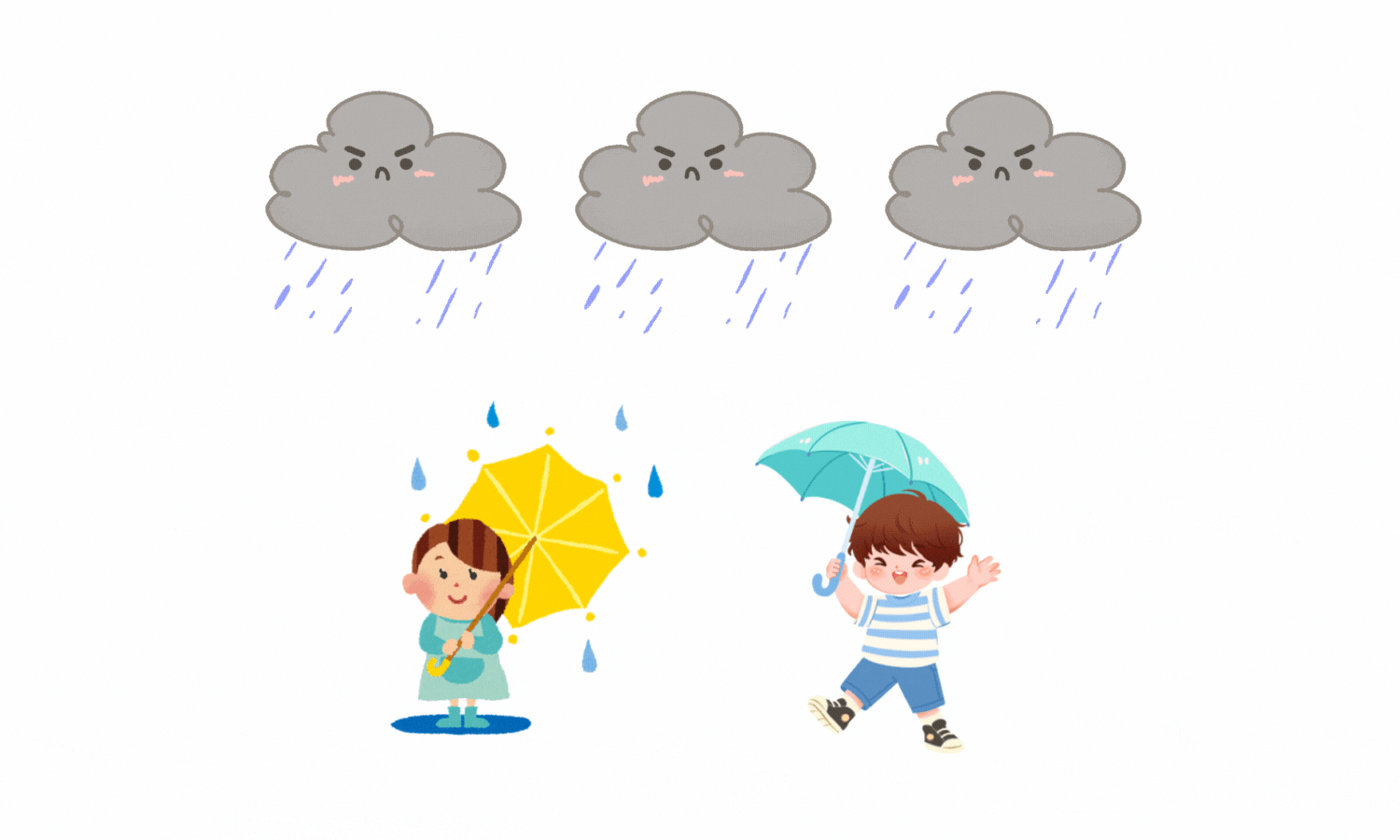How a Weather Chart Turned Morning Chaos into Calm Curiosity


How a Weather Chart Turned Morning Chaos into Calm Curiosity
by Dewi Griffith Ph.D
It was a rainy Tuesday morning in Ms. Amira’s preschool classroom.
Backpacks dripped by the doorway. Tiny shoes squeaked across the floor. Chatter buzzed in the air.
“Is it raining again?” one child asked.
“No, it’s cloudy!” another insisted.
“But my mom said the sun will come out later!”
By the time of circle time, the debate was louder than the raindrops outside.
Every day, Ms. Amira noticed the same pattern — her students were curious about the weather, but their conversation quickly devolved into confusion.
Some didn’t know the difference between windy and stormy. Others confused cloudy with foggy.
The children had enthusiasm, but their understanding was patchy.
Ms. Amira wanted to build on that natural curiosity — help them notice, name, and meaningfully talk about the weather.
That’s when she added the Daily Weather Chart to her classroom.
The topics that we cover include the following:
How a Weather Chart Turned Morning Chaos into Calm Curiosity
The Challenge: Big Curiosity, Little Framework
The Game Changer: The Weather Chart
Why It Works: Turning Observation into Understanding
How to Set Up a Daily Weather Chart (Template Guide)
The Outcome: From Routine to Reflection
References


The Challenge: Big Curiosity, Little Framework
Early learners are naturally observant.
They notice sunlight streaming through windows, the sound of rain on the roof, or the way wind moves the trees.
But, as Dr. Jean Piaget (1962) explained in his theory of cognitive development, young children think concretely — they learn best through direct experience and visual support.
Without visuals, abstract ideas like “partly cloudy” or “humid” can be hard to grasp.
Ms. Amira realized that her students didn’t just need words for weather — they needed a daily ritual that connected observation, conversation, and ownership.


The Game Changer: The Weather Chart
On Wednesday, Ms. Amira showed up early with an idea — and a big board.
She sketched a large sun on the top, puffy clouds on the side, a tiny umbrella for rainy days, and even a curled wind symbol made of blue ribbons. Below, she made slots for children to post weather cards each morning:
Sunny
☁️ Cloudy
⛅ Rainy
💨 Windy
☁️☀️ Mixed / Changeable
She also drew a small box for the temperature — with hot, warm, cool and cold options — and a place to write the day and date.
When the children arrived, their eyes popped.
“Wow, Ms. Amira, it’s like a weather TV!” said young Noor, spinning one of the cloud cards.
“Exactly,” Ms. Amira smiled. “But you are today’s weather reporter.”
Every morning, a new “Weather Helper” was elected to look outside, observe, and fill in the chart. They placed cards, wrote the temperature number, and led the group in describing the conditions of the day.
Weather was no longer just a backdrop — it was part of the classroom’s rhythm.
Why It Works: Turning Observation into Understanding
By week two, Ms. Amira saw major shifts.
The children began to expand their vocabulary:
“It’s not just rainy — it’s drizzling!”
“It’s windy, but not cold today!”
They also started to connect patterns:
“When it’s cloudy in the morning, it rains later.”
Lev Vygotsky (1978) wrote that children learn best through social engagement—when learning is socially constructed through conversation, reflection, and explanation.
The weather chart had become exactly that: a shared learning opportunity that melded language, observation, and reflection.
Dr. Maria Montessori (1949) also noted that repetition and order give young children a sense of calm and security.
The chart became a predictable morning activity that rooted the class before beginning their day.


How to Set Up a Daily Weather Chart (Template Guide)
Create a Simple Weather Chart
With minimal supplies and visual supports, your kids can create their own daily weather chart!
Consider using a template like Ms. Amira’s classroom-friendly chart, below.
Teacher Tip: Laminate and add Velcro or magnets to the weather icons. Have the children update the chart each morning with a little independence. Even better: Have them take turns being the “weather helper.”
Download the simple weather chart template here


The Outcome: From Routine to Reflection
By the end of the month, Ms. Amira’s classroom had a new sound.
The chaotic first moments were slowly replaced with calm and calm. The children would gather by the chart, animatedly describing their observations of the weather.
Their chatter echoed around the room as they pointed to the sky, gestured to the thermometer and mimicked the weather icon.
“Yesterday it was cloudy, but it is sunny today. It might be windy tomorrow!” Faris declared, flipping through the weather cards.
Ms. Amira beamed at her class. The simple weather chart had sparked a moment of mindfulness and connection in the morning.
The children were no longer just noting the weather—they were beginning to notice the world around them.
In those few quiet minutes each morning, they learned that science doesn’t always have to be in a textbook—it can also start right outside their window.


References
Montessori, M. (1949). The Absorbent Mind. Holt, Rinehart and Winston.
Piaget, J. (1962). Play, Dreams and Imitation in Childhood. W. W. Norton & Company.
Vygotsky, L. S. (1978). Mind in Society: The Development of Higher Psychological Processes. Harvard University Press.
Other articles you might like
Learning Through Play
Home Reading Tips
DIY Learning Materials
